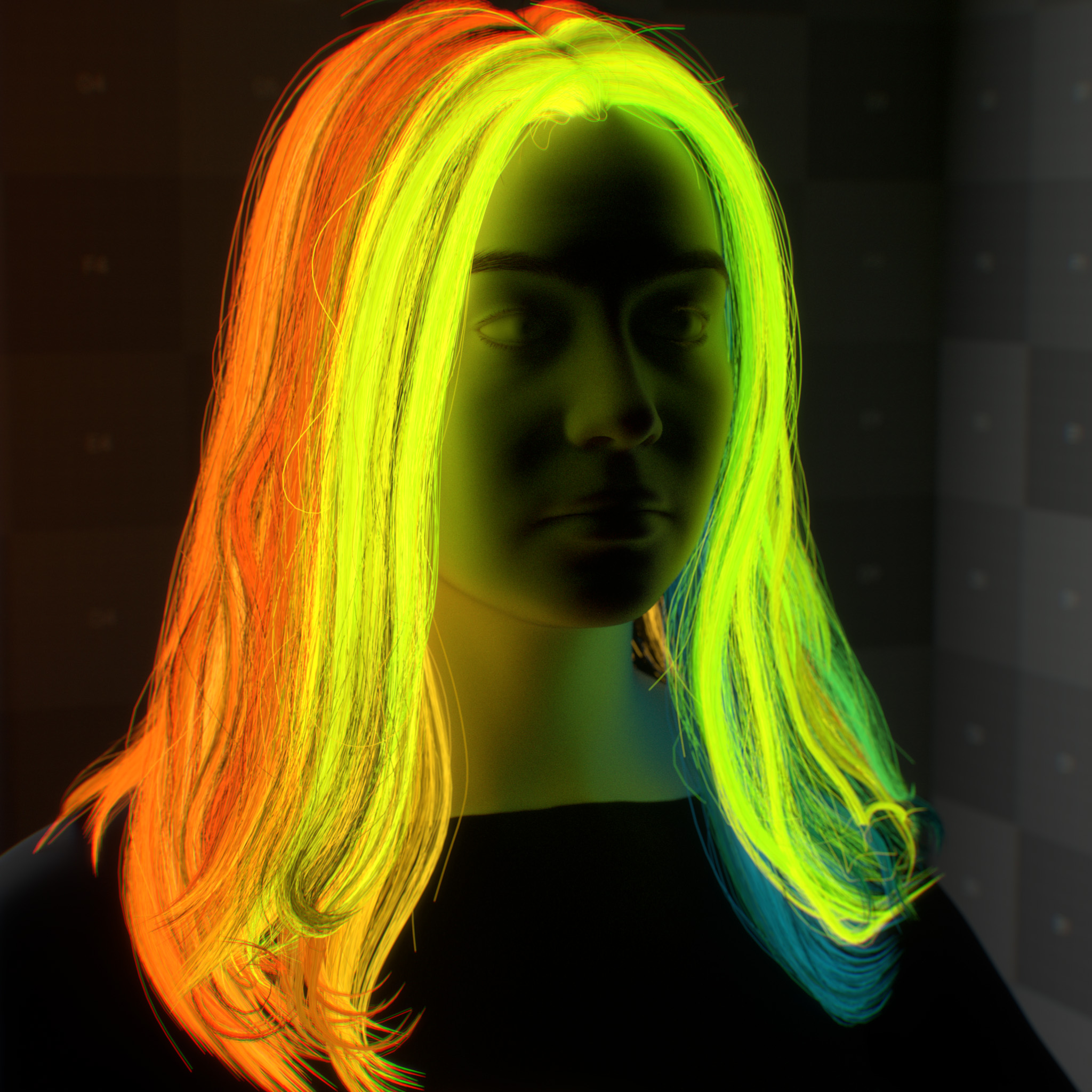Emission#
Hair emission controls self-illumination effects in hair strands, useful for creating bioluminescent or glowing hair effects. This property works independently of diffuse and specular properties
Parameters
Display Name |
Name |
Type |
Default |
|---|---|---|---|
emission_weight |
float |
0.0 |
|
emission_mode |
enum |
emission_lx |
|
emission_intensity |
float |
1.0 |
|
emission_color |
color |
1.0, 1.0, 1.0 |
|
emission_use_temperature |
bool |
false |
|
emission_temperature |
float |
6500.0 |
This layer adds an additional directionally uniform EDF, which describes the light-emitting properties of the surface.
Note
Realistic hair fibers do not have any emissive property, and these are just for artistic control.
Note
In the RTX – Interactive (Path Tracing) mode, to reduce the noise in the indirectly lit area using emissive materials, one may need to increase the Total Samples per Pixel.
Please see RTX Interactive (Path Tracing) mode render settings for more information.
Weight
This parameter sets the amount of light emission from the surface.

|

|
Emission Mode
This parameter specifies the physical units to use for the emission intensity.
1. “Nit” is the unit of luminance and describes the surface power of a visible light source. The overall illumination of the scene changes depends on the size of the light source.
One nit is equal to one candela per square meter. 1 nit = 1 cd/m^2
The candela per square meter is the base unit of luminance. Candela is the base unit for luminous intensity.
A light source that emits one candela of luminous intensity onto an area of one square meter has a luminance of one candela per square meter or one nit. As an example, a calibrated monitor has a brightness of 120 cd/m^2 or 120 nits.
2. “Lux” is the unit of illuminance and describes the total amount of visible light that a light source emits. The overall illumination of the scene does not change depending on the size of the light source.
One lux is equal to one lumen per square meter. 1 lux = 1 lm/m^2
A light source that emits one candela of luminous intensity from an area of one steradian has a luminous flux of one lumen.
A light source that emits one lumen of luminous flux onto an area of one square meter has an illuminance of one lux. As an example, very bright sunlight has a brightness of 120,000 lux.
Intensity
This parameter sets the emission intensity. The emission mode parameter sets the physical unit for this parameter.
A few examples of illuminance under various lighting conditions:
Lighting Condition |
Illuminance (lx) |
|---|---|
Sunlight |
100,000 - 120,000 |
Daylight |
10,000 - 25,000 |
Overcast |
1000 |
Twilight |
10 |
Full moon |
0.05 – 0.3 |
Ceiling lamp |
400 - 800 |
Table lamp |
200 - 300 |
Candle light |
12.57 |
Color
This parameter sets the emission color.

|

|
Use Temperature
Enable the use of color temperature value instead of color.
Note
This parameter will override the default emission color, including any textures assigned to the emission color parameter.
Temperature
This parameter specifies emission color using a color temperature in the Kelvin unit. Lower values are warmer, i.e., redder, while higher values are cooler, i.e., bluer. The default value of 6500K is close to D65 illuminant, the white point in sRGB and Rec. 709 color spaces.

|

|

|